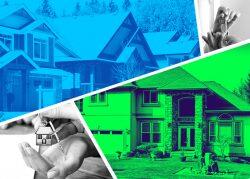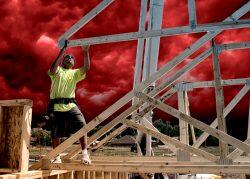The residential market has had a wild year and a half, with home prices, bidding wars and all-cash offers all rising substantially. But one thing hasn’t changed.
The cash that buyers put towards a down payment has not risen significantly in percentage terms, according to a recent study by LendingTree.
The study found the average down payment across the country’s 50 largest metropolitan areas is $46,283 is overall consistent with previous years, despite the high home values and the hot housing market. In terms of raw dollars, down payments are rising, but in terms of percentages they’re staying roughly the same.
“Part of me thought that people would be putting down bigger and bigger down payments, but that doesn’t necessarily seem to be the case,” said Jacob Channel, senior economic analyst at LendingTree.
Putting down a higher down payment could make a buyer seem extra attractive in the eyes of a seller when competition is high, but data suggest buyers could get away with not putting a larger down payment percentage toward a home.
The loan-to-value ratio at origination, which looks at the size of one’s loan as a portion of the total value of the home, has been constant at about 95 percent over the past few years, Channel said, meaning people usually put about 5 percent of a home price towards a down payment.
LTVs would have fallen if people put a higher percentage of money towards their down payments, but instead the ratio has hardly changed. Buyers are not putting higher portions down towards their loans.
“Lenders have shown their willingness to approve loans for people who can’t necessarily put down the platonic ideal of a 20 percent down payment,” Channel added. “Also, I think that a lot of it does come down to the fact that people probably just don’t have that much cash laying around.”
Many buyers are being approved for loans with less than 20 percent down right now, even for a 3 or 5 percent down payment, Channel said.
Read more


The average down payment was highest in San Jose, where buyers put down about $115,000, or 88 percent of the area’s median household income. Those in San Francisco spent even more of their household income towards a down payment: The average down payment was about $103,000, or 90 percent of the median household income.
On the flip side, the metro area of Oklahoma City had the lowest down payment, averaging about $28,000, or 47 percent of the area’s median household income.
LendingTree chose to examine average down payments (which can be skewed by outliers) rather than median down payments in order to show more variation in down payment prices, Channel said. The median down payment in those 50 areas is about $34,000.
“Yes, you have to save quite a bit of cash to buy a house, but that number might not necessarily be as high as you think it will just by glancing at home prices,” Channel said.
The housing market was piping hot for months amid the pandemic, but has begun to show signs of cooling as inventory and median listing prices begin to fall.
